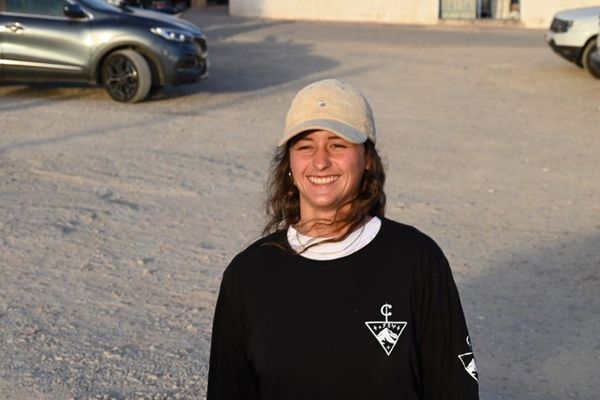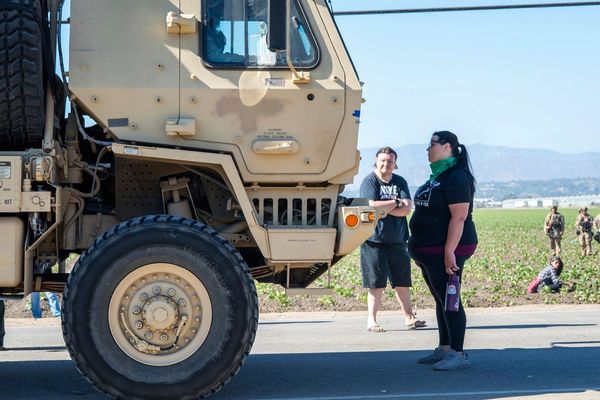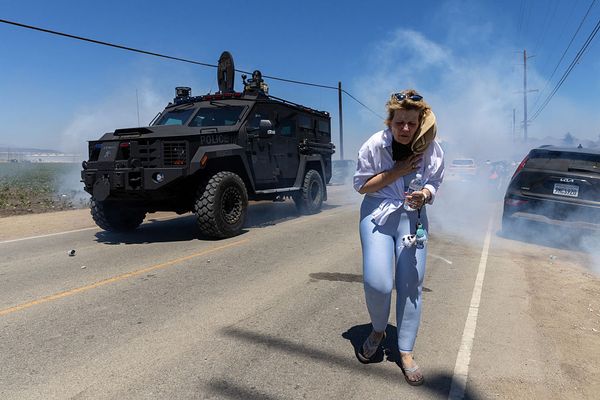
On the morning of 13 November 2022, Hunter Johnson and Emily Alandt, two students at the University of Idaho in Moscow, answered an odd phone call. Their friend Dylan Mortensen, who lived just a few houses away, heard strange noises during the night and was scared. Her four upstairs roommates weren’t answering their phones – could they come over and check on things? Johnson and Alandt weren’t particularly concerned, Moscow being a quiet college town of unlocked doors, until they reached 1122 King Road. The usually boisterous residence, the node of a sprawling friend group, was eerily quiet. Johnson proceeded up the stairs and into the bedroom where his best friend, Ethan Chapin, 20, was staying over with his girlfriend, Xana Kernodle, also 20. Then, to spare the others the trauma of a ghastly sight, he told the girls to call 911 for an “unconscious individual”.
By now, the clinical facts of the University of Idaho murders, as they have become known, have been published and republished, dissected to death online and seared into the consciousness of even casual news consumers. So One Night in Idaho: The College Murders, a new Amazon docuseries that includes, for the first time, extensive interviews with Johnson, Alandt and other close friends and family, takes a different approach – not a chronology of the murders of Chapin, Kernodle and her roommates, Madison Mogen, 21 and Kaylee Goncalves, 21, but how the crime and its nuclear fallout landed on their loved ones. How much confusion ensued in the hours after the 911 call, as more and more friends, including Chapin’s fellow triplets, Hunter and Maizie, gathered outside the house, while police searched and said nothing; the group got confirmation that their friends had died not from officers on the scene, but from a campus shelter-in-place alert to their phones.
“In the crime genre, the majority of those are told through the lens of an investigator or law enforcement or a journalist,” Matthew Galkin, co-director of the series with Liz Garbus, said. “We wanted to flip the script with this one because we felt like that was the part of the story that hadn’t been told yet.”
Plenty of other stories were – within hours of the discovery, the four murders made international news. Reporters from outlets around the country descended on the small, formerly quiet community in the northern Idaho panhandle. The house at 1122 King Road became not only an active crime scene but a grim tourist attraction, drawing amateur sleuths and true crime enthusiasts who posted photos of blood dripping down the house’s foundation. The tragedy was catnip for widespread attention – four photogenic, white, very online kids whose public social media profiles provided ample material for amateur sleuths; the group posed and posted classically college photos, all tangled together before a football game, the day before they were brutally stabbed to death. Authorities revealed next to no information – no leads, no suspected motive, no known connections to a killer at large. Plenty of space for sideline conjecture, or as Galkin put it, “a perfect storm for that kind of social media scrutiny”.
The first two episodes of the series relive those horrific initial six weeks for friends and family, as they were bombarded with media requests, unsolicited direct messages or accusations of murder themselves, on top of unimaginable grief. Anonymous websites argued that Johnson – the kid that found his best friend murdered — was the killer, based on his friends’ social media snippets. Amateur sleuths snuck into classes and dorms. Others tried to access the house, still roped off with caution tape. “All of a sudden there are blueprints of the house and people are making 3D models,” Galkin said. “It just became almost like a game to people.” For those close to the victims, so-called Reddit detectives and anonymous DMs threatening retribution were just as scary as the fact that the real killer was still at large. “I was once again fearing for my life but for a completely different reason,” Daniel Berriochoa, Chapin’s fraternity brother and one of the last people to see him alive, recalls in the series.
Direct threats aside, “I don’t think the majority of people were malicious in what they were doing. I certainly think there was a legitimate desire to solve this,” said Galkin. But the naming of suspects in public went “haywire” – “these people aren’t law enforcement. They’re not lawyers. They have no right to pick people they don’t know and accuse them of horrific crimes and then just sit back and watch it all happen.”
Six weeks after the murders, authorities arrested Bryan Kohberger, a 28-year-old criminology student at Washington State University, a 15-minute drive over the border from Idaho’s campus, at his parents’ house in Pennsylvania. According to a probable cause affidavit, investigators found him based on DNA evidence from the button of a knife sheath left at the scene. One would think an arrest would tamp down speculation, but new questions only fueled it – why did he do it? How did he know the victims? Why did he leave two – Mortensen and Bethany Funke – unscathed? It was at this point that Galkin and Garbus entered the picture and began speaking with families about telling their side of the story. As with Garbus’s recent series on the Gilgo Beach serial killer, there would be hard rules: “We go by facts. We do nothing salacious. We do nothing gratuitous,” said Galkin. There would be no blood, no bodies, just recreations of the victims’ rooms as they would have existed prior. “We can have people tell us the story and infer visually what happened, but you don’t have to go there.”
Though grounded in first-hand experiences, the series stays attuned to larger forces – online speculation, the ongoing information vacuum from authorities after a court’s gag order, and Kohberger’s potential links to hyper-misogynistic incel (“involuntary celibate”) ideology. The latter half of the series speculates that Kohberger posted creepy questions about the murders – which hand did he use? Did he shower at the house after? – in a large true crime Facebook group as “Pappa Rodger”, perhaps in a nod to “incel hero” Elliot Rodger, who killed six and injured 14 during a murderous rampage in California in 2014. Rodger targeted an Alpha Phi sorority house and left behind manifestos and videos railing against women who rejected him. Goncalves was a member of Alpha Phi at the University of Idaho, while Kernodle and Mogen were members of Pi Beta Phi.
The question undergirding all this attention remains: why? “We went as far as we could possibly go with answering that question without having actual facts because there was no process of discovery and there was no trial,” said Galkin. But based on what has been revealed, “I don’t believe that it was a completely random act of violence,” he said. “He didn’t just pick four strangers. I feel like there was at least one of them that he had tracked at least somewhat.”
Whatever evidence investigators found of Kohberger’s intentions, or any connection to the victims, remains an open question that may never be answered. Earlier this month, Kohberger pleaded guilty to all four murders, thus avoiding a long-delayed trial scheduled for next month as well as the death penalty. He will spend the rest of his life in prison without parole, pending a judge’s acceptance of the deal later this month. The deal, a week before the series aired, “caught us all off guard”, Galkin said. “There were some grumblings that it was possible, but I didn’t actually think it would happen.”
Immediately, some loved ones vehemently opposed it; in a statement, the Goncalves family, who did not participate in the series, said they were “beyond furious” at a “very unexpected decision” they did not consider to be justice. Others who did – including the Chapins and Mogen’s mother and stepfather – expressed support, relieved not to endure the trauma of a long trial with graphic evidence and the possibility that Kohberger walked free. “We can actually put this behind us and not have these future dates and future things that we don’t want to have to be at, that we shouldn’t have to be at, that have to do with this terrible person,” Mogen’s father, Ben, told CBS. “We get to just think about the rest of lives and have to try and figure out how to do it without Maddie and the rest of the kids.”
Galkin and Garbus added a title card explaining the outcome at the end of the final episode, though it does not change its focus: remembering how the four victims lived, in the words of the people who actually knew them. Mogen was sweet, quiet and slyly funny with her distinctive dance moves; Goncalves was ambitious and sparkly; “DJ Xan” Kernodle insisted on bringing her MacBook computer everywhere to play her music; Chapin never missed an opportunity to make people laugh.
And for Galkin and Garbus, to offer a true crime series that warns against the obsession with true crimes concerning real people. “There is a time and a place for amateur sleuthing. But there’s also a human toll,” said Galkin. “Hopefully, this series allows you to look in their eyes and just understand what this is doing to people. Maybe people might think twice before they do this on the next enormous crime story.”
One Night in Idaho: The College Murders is now available on Amazon Prime Video







